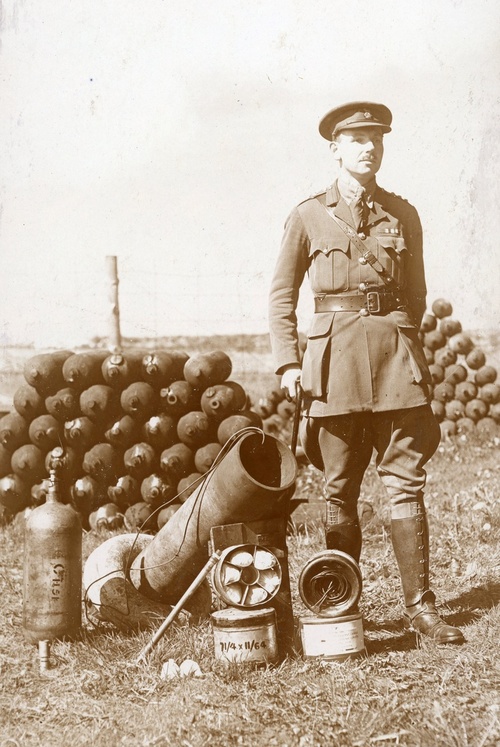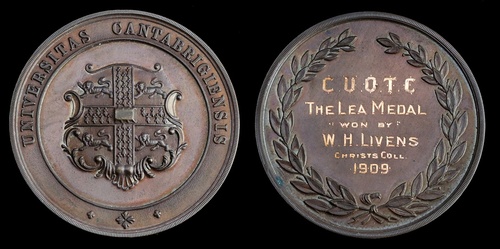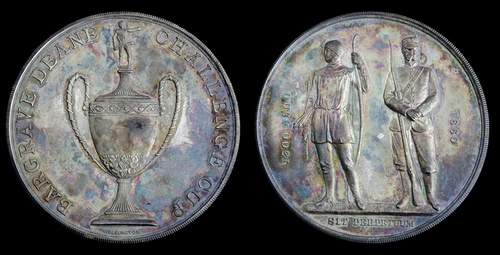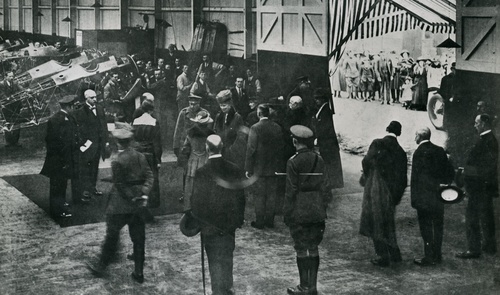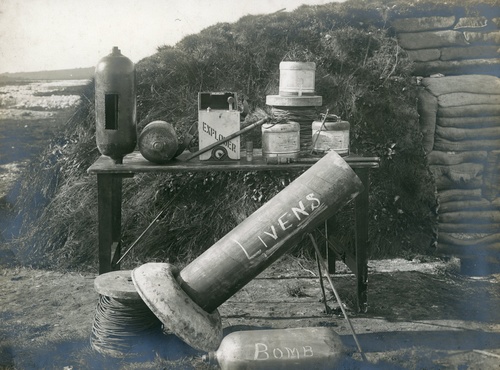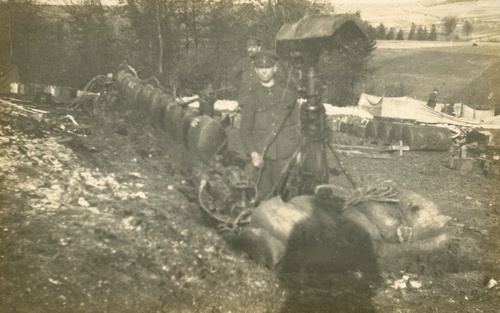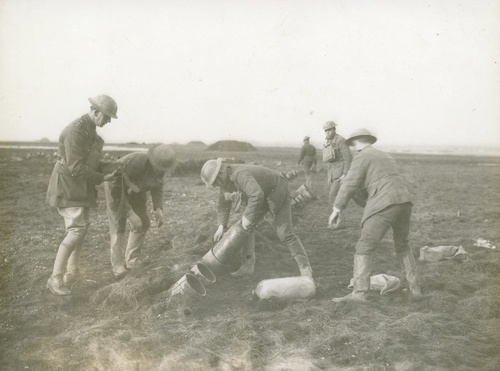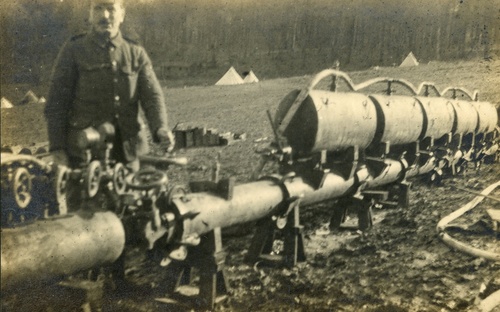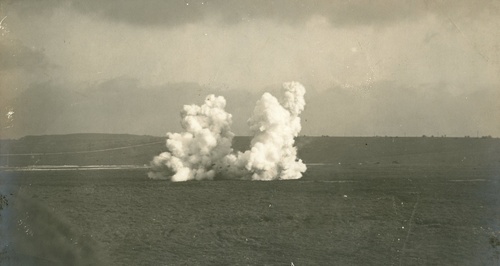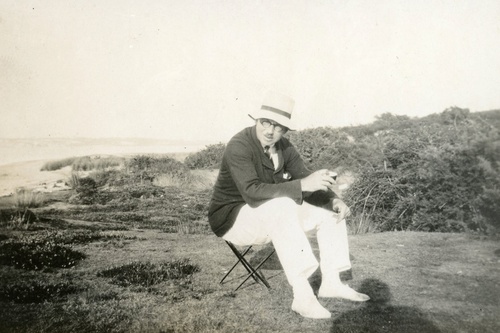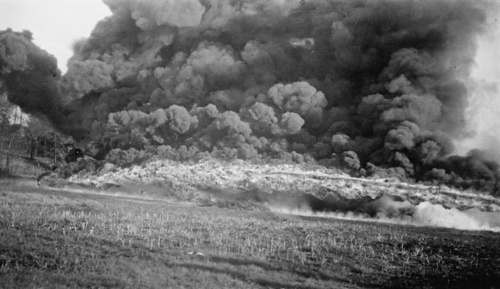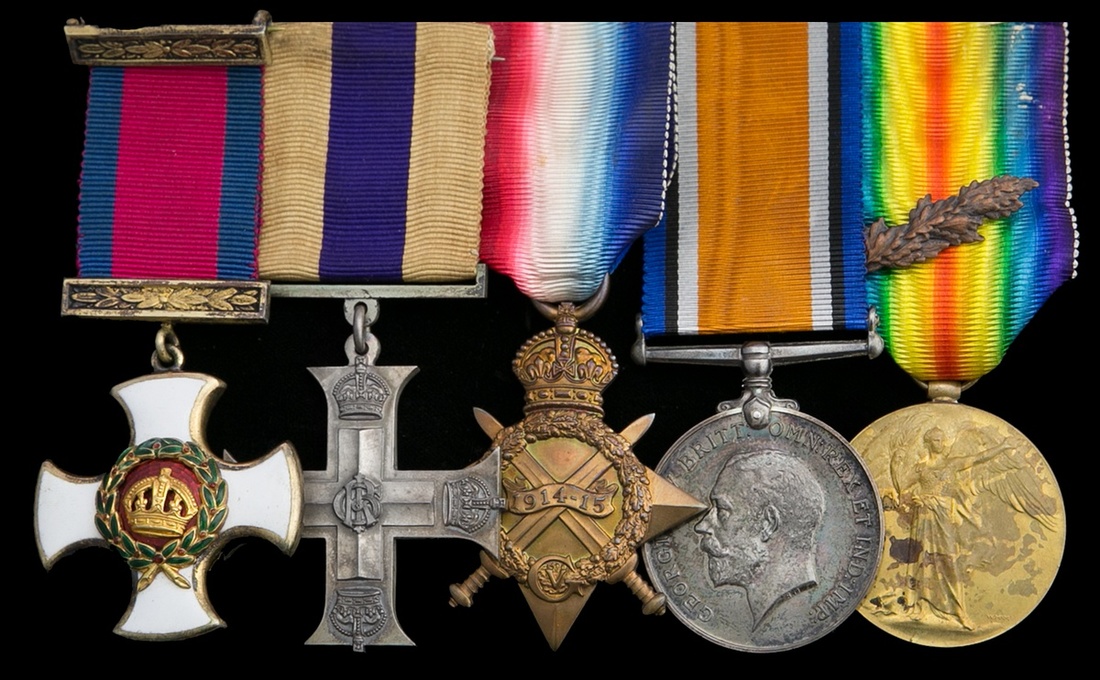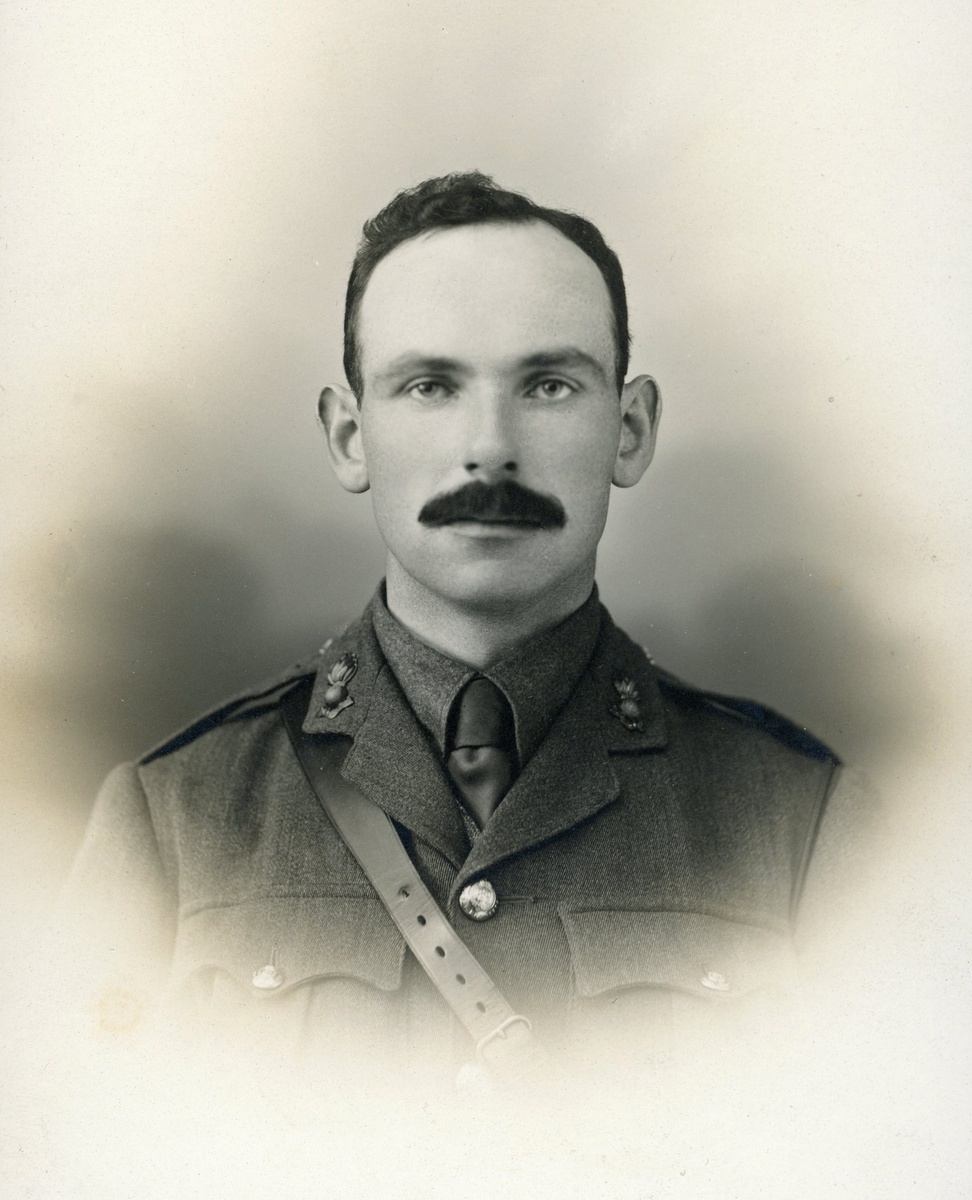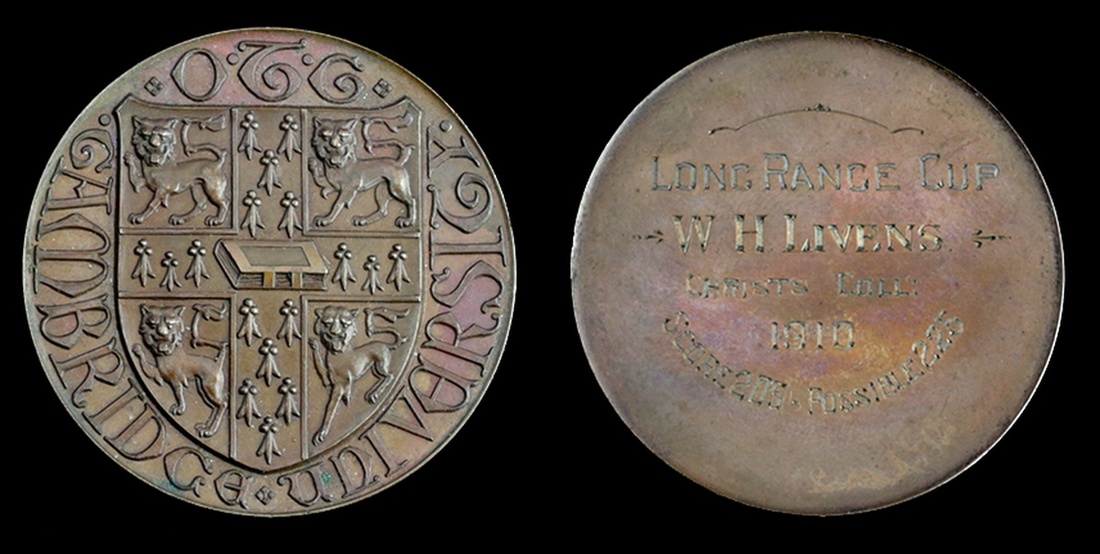Auction: 18002 - Orders, Decorations and Medals
Lot: 486
Sold by Order of the Recipient’s Daughter
‘Livens was the typical inventor. His equipment as one remembers it was an old club blazer with numerous pockets out of which explosives of all kinds, fuses, wire and gadgets would emerge and hey presto! the most surprising detonation would occur in disconcerting places.’
‘On one occasion he brushed aside all opposition at Victoria Station and filled a Pullman car with miles of rubber pipes and boxes of heavy gun-metal castings, and on reaching Boulogne he telegraphed the Quartermaster-General personally for the immediate supply of 20 lorries - which he got!
“Who is the damned man Livens?” a furious voice asked me on the telephone; and when supplying the soft answer I could not help thinking that there was a lot more trouble to come.’
Sir Donald Banks and Major-General Foulkes share their memories.
The historically important Great War D.S.O., M.C. group of five awarded to Captain W. H. Livens, Royal Engineers, who was always ‘fertile in new ideas’ and made ground-breaking advances in chemical warfare
Initially assigned a clerical role, his ‘inventive genius’ came to the fore when disastrous mishandling of gas at the battle of Loos inspired him to develop safer and more accurate chemical weapons, services for which he was twice decorated and thrice mentioned in dispatches
Chief among them was his gas-firing ‘Livens Projector’, a weapon comprised of a mortar firing gas canisters. Combining the advantages of gas clouds and gas shells, it proved decisive at La Boiselle and Messines Ridge and was subsequently taken up by military forces throughout the world
Livens’ most notorious invention, however, was his ‘Flame Projector’, one of which was recently the subject of a detailed excavation led by the historian Peter Barton. A fearsome presence on the Western Front, the giant flamethrower proved to be pivotal to British success in the Mametz sector during the Battle of the Somme
Distinguished Service Order, G.V.R., silver-gilt and enamel, in Garrard & Co., 24 Albemarle St. case of issue; Military Cross, G.V.R., the reverse contemporarily engraved, ‘Capt. W. H. Livens. M.C. R.E. Loos. Sept. 25th & 27th 1915’; 1914-15 Star (Capt. W. H. Livens. R.E.); British War and Victory Medals, M.I.D. oak leaf (Capt. W. H. Livens. R.E.), the obverse centre of the D.S.O. a little loose, generally good very fine or better (5)
D.S.O. London Gazette 1 January 1918.
M.C. London Gazette 11 January 1916.
William Howard Livens was born in March 1889 at Lincoln, the only son of Frederick Howard Livens, J.P. Educated at Oundle School and Christ’s College, Cambridge, he became
Captain of the Cambridge Rifle Team. A crack shot, he broke several records in competitions against Oxford and won the Bargrave Dean Challenge Cup Silver Medal. He graduated with a B.Sc. in Engineering and, after a spell as Assistant Editor for Country Life, began training as a civil engineer. The 1911 Census records him living in London at No. 4 The Avenue, West Ealing.
‘Bullseye’
Livens applied for a commission in the Royal Engineers on 4 August 1914, the day Britain declared war on Germany. Commissioned a 2nd Lieutenant in the Royal Engineers on 30 September, he was assigned a clerical role at Chatham with the Motorcycle Signalling Section. His experience of target shooting gave him an early advantage, as Dr. Edward Hindle’s obituary recounts:
‘When he paraded for instruction in revolver shooting the sergeant in charge, not knowing his reputation as a shot, carefully explained to him how to load his weapon and take aim and the details of firing. The supposed tyro was then told to fire 10 rounds at the target and after each shot the sergeant kept repeating sympathetically: “Sorry, Sir, you're not yet on the target.” After the 10 shots had been fired Livens mildly suggested a closer look at the target and all 10 shots had hit the inner bull!’
Eye for an Eye
On 7 May 1915, R.M.S. Lusitania was sunk off the Irish coast by a German U-Boat with the loss of 1,198 passengers and crew, including 128 neutral Americans. The atrocity had a profound effect on Livens: Major-General Charles Foulkes, later his commanding officer, attributed Livens’ subsequent experiments with chemical weapons to his disgust at the Lusitania’s sinking (Foulkes 1934, 169). Livens vowed to kill 1,198 German soldiers, a number equal to the civilian deaths on board Lusitania.
His vengeful ambitions may also have sprung from the Germans’ first use of poison gas at the Second Battle of Ypres, on 22 April. A flagrant breach of Article IV of the 1899 Hague Convention, it drove Livens to anger. He would undoubtedly have agreed with Lieutenant-General Ferguson, Commander of II Corps, who summed up the British response to gas attacks:
‘It is a cowardly form of warfare which does not commend itself to me or other English soldiers … We cannot win this war unless we kill or incapacitate more of our enemies than they do of us, and if this can only be done by our copying the enemy in his choice of weapons, we must not refuse to do so.’
Hoping to break the deadlock of trench warfare, Allied commanders spent the summer of 1915 planning an offensive at Loos. On 6 September, a commanders’ conference headed by Lord Haig ruled that poison gas would form part of the British attack, planned for 25 September. On the morning of the attack, Haig sent his A.D.C. to the front line and instructed him to test the wind direction by lighting a cigarette. Once the wind proved favourable, chlorine gas was released from cylinders positioned just in front of the British trenches. The resultant noxious cloud drifted towards German lines and the attack began. Then the wind changed direction, with calamitous results.
Clearly, a safer and more reliable method of employing gas had to be found. British artillery experimented with gas-filled shells; while these were more accurate, the amount of gas they released on impact was negligible. What was needed was a means of ‘projecting’ into a precise area the highest possible concentration of gas. To this end and on his own initiative, Livens began experiments. He fitted out makeshift laboratories at his Chatham barracks and made designs in his bedroom. Using vacant land by the Thames Estuary as a firing range, he began developing flamethrowers and mortars for projecting oil and gas.
Command - ‘Z’ Company
After Loos, Livens evolved ways of making the existing system of delivering gas more efficient. He introduced long rubber hoses which could be fitted to gas cylinders, thereby allowing the gas to be released at an optimum location. He developed manifolds to connect four cylinders to a single hose. Major-General Foulkes of the Royal Engineers was impressed by Livens, regarding him as a ‘go-getter’. Livens’ inventive zeal often bordered on the fanatical, as Foulkes later recounted:
‘On one occasion he brushed aside all opposition at Victoria Station and filled a Pullman car with miles of rubber pipes and boxes of heavy gun-metal castings, and on reaching Boulogne he telegraphed the Quartermaster-General personally for the immediate supply of 20 lorries—which he got! "Who is the damned man Livens?" a furious voice asked me on the telephone; and when supplying the soft answer I could not help thinking that there was a lot more trouble to come.’
In late 1915 Livens was put in charge of ‘Z’ Company, Royal Engineers, a special unit tasked with developing Britain’s answer to the German flamethrower recently deployed on the Western front. For these services he was to receive a mention in despatches and the Military Cross (London Gazette, 1 & 11 January 1916).
With his father’s assistance, Livens conceived a pipe 56 feet long and 14 inches in diameter with fuel tanks connected to it. This apparatus could be concealed in a shallow sap beneath no-man’s-land and brought within yards of enemy trenches. The pipe terminated in a small nozzle hidden beneath the ground, which before an attack was pushed upwards through the earth by a hydraulic jack and pointed at the enemy. At the desired moment, piston-driven compressed gas was forced into the fuel chamber, pushing fuel along the pipe. As the fuel spewed out from the surface nozzle it was set ablaze by the ‘Igniting Torch’, a gas generator filled with a mixture one part calcium carbide and two parts calcium phosphide. If this failed, Livens recommended that a man with a ‘torch’ consisting of a can filled with burning cotton waste could stand beneath the nozzle and ignite the oil jet as it passed over his head! Either way the effect was utterly terrifying, as period photographs testify.
Manufactured entirely in Lincoln on the premises of Ruston, Proctor & Co., the ‘Livens Flame Projector’ went from drawing board to the Western Front in just 25 weeks. Livens wrote a comprehensive manual for his invention, in which he states: ‘The projector is most effective when placed so that the head rises through the earth about 40 to 50 metres from the strong point to be attacked. At this distance the sweep of fire is sufficient to render untenable enemy trenches and works on a front of about 100 metres and for a depth behind the front line of about 60 metres.’
The effective range of Livens’ weapon thus exceeded 100 metres, and with a fuel capacity of 1,090 litres it fired three 10-second bursts or ‘shots’. Livens found that adding diesel to the fuel mixture made it stick to anything it touched. Diesel’s other advantage was that it kept burning long after the initial discharge, causing the enemy maximum discomfort. Livens designed the surface nozzle so that it swivelled left and right, raking German trenches in all directions. It was very much a psychological weapon, as the historian Peter Barton has observed:
‘The idea was to fill the enemy with terror. It was a weapon, not of mass destruction, but of mass terror, pure and simple. The idea was to force the Germans to keep their heads down long enough for your infantry to cross no-man's-land. They were meant to scare the Germans. It didn't kill that many people. The idea was just to make them so frightened of this horrific thing.’
Four Livens Flame Projectors were employed on 1 July 1916, the first day of the Battle of the Somme. ‘Z’ Company had spent the previous months perfecting them and practising drills, each Projector requiring a crew of seven men. Royal Engineers tunnelling companies had dug the inclines and saps in which the Projectors were assembled, and by 1 July everything was ready. War Diaries of the Royal Engineers record than on 28 June, a German shell struck one of the inclines to Sap 14, burying the Projector within. It was this Projector which ‘Time Team’ discovered in 2010 (see ‘Time Team’ Special 42 (2011) - The Somme’s Secret Weapon). Another Projector was also destroyed by shell-fire prior to the battle.
Nevertheless, at 07:30 on 1 July the two remaining Projectors opened-up on the German lines around Mametz. They did not disappoint. Taken completely by surprise, those German soldiers who survived the inferno were forced down into their concrete dugouts. As Livens calculated, each Projector neutralised an area of the German front 100 metres wide, allowing British infantry to cross no-man’s-land with very few casualties. Dazed German soldiers emerged from their dugouts to find trenches full of British troops. In marked contrast to the rest of the Somme Offensive, the Allies made rapid progress in the Mametz sector and gained several miles.
As Livens’ invention depended on a static front, it became redundant the moment the British line advanced beyond its nozzle: this lack of mobility ran counter to Allied hopes of restoring a war of movement, and ultimately led to the weapon’s abandonment. It was rather ironic given that Livens’ ‘static’ weapon had enabled a rapid and successful advance, but Livens was by no means perturbed. He simply moved on to his next invention.
The Livens Oil and Gas Projector
One day during the Somme Offensive, ‘Z’ Company attacked a well-entrenched party of Germans. When grenades proved unsuccessful in shifting them, Livens threw two 5-gallon oil drums. So effective was the burning oil that Captain H. G. L. Strange wondered whether a container carrying flame to the enemy might be more effective than a complex flamethrower. Livens reflected on the incident, and went on to develop a simple mortar that could throw a 3-gallon oil drum which burst on landing. Major-General Foulkes later wrote:
‘[Livens] did this by throwing it out of extemporised mortars which consisted of the ordinary steel containers in which his oil was received … The mortars were buried in the ground in rows, almost touching each other and with only the muzzles visible above the surface, and in this manner they were set in the required direction … The drums were filled with oil and cotton-waste, and they were opened up and contents were lighted and scattered by charges of gun-cotton fixed to the surface and detonated through lengths of time fuse which were lighted by the flash from the black powder propellant charge.’
Eighty of Livens’ new weapons were used at La Boiselle on 25 July 1916 to support the Australian attack on Pozières. The weapon proved highly successful, and General Gough ordered Livens to produce more. Developed into the ‘Livens Oil and Gas Projector’, it became known simply as the ‘Livens Projector’. A simple tube closed by a hemisphere at one end, it could be buried into the ground at a 45-degree angle with the muzzle pointing towards the enemy. Small and inexpensive, hundreds of these mortars could be lined up in a vast battery in front of the Allied trenches.
In August 1916, Livens modified the weapon to fire canisters of poison gas. This was tried at Thiepval in September 1916 and at Beaumont-Hamel in November. When the canisters burst on impact they delivered a far higher concentration of noxious gas than the ‘gas cloud’ at Loos, and in a far more precise and targeted manner than was possible by simply opening a row of canisters. Livens’ system was much safer for its operators and was not affected by changes in wind direction. For solving these problems Livens received his second mention in despatches (London Gazette 4 January 1917, refers).
Though its initial range was only 200 yards, ‘Z’ Company developed longer mortars capable of reaching 350 and even 1,400 yards. The 1,400-yard version was electrically triggered, enabling its operator to fire it from behind Allied lines using an electric cable. This innovation made it possible to fire thousands of Livens Projectors at once, surprising the Germans and creating a dense gas cloud. Over 6,000 of these new Livens Projectors were fired at Messines Ridge in June 1917, their horrifying impact revealed in this German battlefield report (Spiers 1986, 25):
‘The enemy has combined in this new process the advantages of gas clouds and gas shells. The density is equal to that of gas clouds, and the surprise effect of shell fire is also obtained … Our losses have been serious up to now, as [the enemy] has succeeded, in the majority of cases, in surprising us, and masks have often been put on too late.’
New versions continued to be produced in British munitions factories, their maximum range finally reaching 2,800 yards. The Livens Projector became a standard item of weaponry for British and Empire battalions on the Western Front; total production by the Allies exceeded 150,000 units.
Livens’ remarkable contribution to the Allied war effort was recognised with a third mention in despatches (London Gazette 11 December 1917, refers) and the award of the Distinguished Service Order in the 1918 New Year’s Honours List.
The Livens Oil and Gas Projector was adopted throughout the world. In war-torn 1920s China, Chang Tso-lin, Governor of Manchuria, defeated his rival Feng Yu-hsiang by effectively deploying Livens Projectors. The weapon remained in the British army’s arsenal right up to 1940.
Other Weapons
In late 1916, Livens relinquished command of ‘Z’ Company to become a liaison officer between the Special Brigade of the Royal Engineers, commanded by Major-General Foulkes, and the Ministry of Munitions. He held this post for the last two years of the war.
Foulkes wrote that Livens ‘was always full of ideas’. He made several attempts at cutting barbed wire with explosives. He experimented with firing an orange box full of explosives from a hole in the ground in the manner of a fougasse. Since the explosives invariably detonated in mid-air, the experiment failed. Livens tried again by firing explosives from a modified Livens Projector; Major-General Foulkes later recalled:
‘After the shoot, as the spectators approached the target area to observe the effect that had been produced Livens noticed that one drum containing 100lb of ammonal had failed to explode, and he called out “Back everybody” as he led a hasty retreat. I think he considered
this the highlight of his military career - the occasion when he barked out an order to an Army Commander (Gough) and was promptly obeyed!’
Livens frequently put himself at great risk and showed no lack of courage during experimental work. Once, while testing a service gas mask against hydrogen sulphide, the gas penetrated immediately. Livens was knocked unconscious but quickly recovered.
After the War
Demobilised on 11 April 1919, Livens continued to acquire fame through his remarkable inventions. In 1920 he applied to the Royal Commission on Awards to Inventors and received an award of £500 for his work on flamethrowers and £4,000 for the Livens Projector and its ammunition.
In 1924, Livens invented an electrically-powered domestic dishwasher. Complete with a front door for loading, a wire rack to hold crockery and a rotating sprayer, Livens’ dishwasher was remarkably modern. Family tradition holds that when his prototype was tried by the family maidservant, she burst into tears as water flooded across the floor. The dishwasher was promptly discarded.
In 1940, when the Germans threatened to invade Britain, Livens joined a team of inventors at the newly-formed Petroleum Warfare Department directed by Sir Donald Banks. Banks said of Livens:
‘[He] was the typical inventor. His equipment as one remembers it was an old club blazer with numerous pockets out of which explosives of all kinds, fuses, wire and gadgets would emerge and hey presto! the most surprising detonation would occur in disconcerting places.’
The ‘blazer’ to which Banks refers would be that of the Royal Thames Yacht Club, of which Livens was an avid member for many years. Inspired by the Livens Projector, the Department evolved a type of mine comprising a 40-gallon steel drum filled with petrol with an electrically detonated propellant charge. Known as a fougasse, this would be dug into a roadside and covered with a camouflage net. The Ammonal-based propellant charge would be detonated as the enemy approached, shooting a flame 60 yards in length. Tens of thousands of flame fougasse drums were deployed, particularly in Normandy, and the weapon remains in army field manuals to this day.
Livens married Elizabeth Price while on leave in 1916, and they had three daughters. Elizabeth died in 1945 and he remarried in 1947.
A keen Spiritualist, Livens was honorary Vice-President of the Spiritualist Association of Great Britain and a great friend of Lord Dowding, who shared the same interests. He died in Hampstead on 1 February 1964. A week later his remains were cremated at Golders Green Crematorium.
The vendors related a great number of humorous and unpublishable tales to the cataloguer, among the former the fact that Ruston & Hornsby - the firm which manufactured Livens Flame Projectors - merged with the German company Siemens in 2003.
Livens’ awards were stolen in a burglary in 1969. Despite replacement campaign medals being issued, several years later the originals were anonymously returned to Livens’ family; the official duplicate campaign awards are included.
Also sold with a comprehensive archive and related awards, comprising:
(i)
Shooting Awards (3): C.U.O.T.C. ‘Lea Medal’ (W. H. Livens Christs Coll. 1909.), in Munsey & Co. box of issue; C.U.O.T.C. ‘Long Range Cup’ Medal (W. H. Livens. Christ’s Coll: 1910 Score 205-Possible 225), in Elkington & Co., 22 Regent St. box of issue; N.R.A. Bargrave Deane Challenge Cup Silver Medal, in Elkington & Co., 22 Regent St. box of issue, with enclosed score card.
(ii)
A copy of Livens’ English-Russian bi-lingual Manual for the Livens Flame Projector, with full diagrams of its component parts.
(iii)
15 remarkable postcards showing the Livens Projector at various battles during the Great War, and 14 Great War aerial photographs of sections of the front line at Vimy Ridge, wrapped in a handwritten ‘key’ and enclosed in an official envelope marked ‘On His Majesty’s Service’.
(iv)
An extensive album containing photographs of Livens Projectors at various stages of their development; 13 assorted photographs of Livens, the Livens Projector, and Ruston & Hornsby; 6 family photographs, including one of Livens’ wedding at St. Clement Danes, enclosed in an attractive envelope marked ‘Kind Thoughts’.
(v)
Three obituaries of Livens copied from various newspapers, written by Sir Harold Hartley (The Times, 5 February 1964), Major-General C. H. Foulkes, and Dr. Edward Hindle.
Recommended viewing:
https://www.youtube.com/watch?v=a2pGoz4ZDgE (Time Team Special 42)
Reference sources:
Banks, Sir D., Flame over Britain (London, 1946).
Chancellor, A., ‘The quiet pleasure of washing up (and why I’m still buying a new dishwasher),’
The Spectator, 24 January 2015.
Foulkes, C. H., ‘Gas!’ The Story of the Special Brigade (London, 1934).
Jones, S., World War I Gas Warfare Tactics and Equipment (Oxford, 2007).
Richter, D., Chemical Soldiers: British Gas Warfare in World War I (Kansas, 1992).
Spiers, E., Chemical Warfare (Hong Kong, 1986).
Subject to 20% VAT on Buyer’s Premium. For more information please view Terms and Conditions for Buyers.
Sold for
£12,000
Sale 18002 Notices
The Trio official later claims. Rolls refer.


